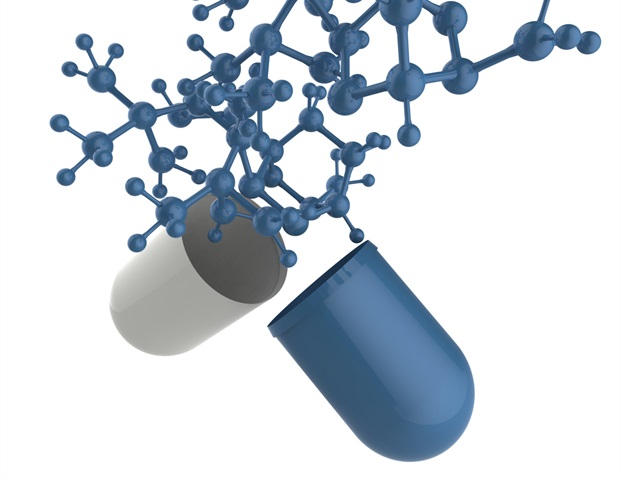
In a current examine, a global analysis crew with important involvement from MedUni Vienna has investigated how nanoplastic particles deposited within the physique have an effect on the effectiveness of antibiotics. The examine confirmed that the plastic particles not solely impair the impact of the medication, however may additionally promote the event of antibiotic-resistant micro organism. The outcomes of the examine have been lately revealed within the journal “Scientific Studies”.
To be able to examine whether or not and the way nanoplastic particles within the physique work together with antibiotics, the analysis crew led by Lukas Kenner (MedUni Vienna), Barbara Kirchner (College of Bonn) and Oldamur Hollóczki (College of Debrecen) linked a standard drug with broadly used forms of plastic. The main target was on the broad-spectrum antibiotic tetracycline, which is used to deal with many bacterial infections, equivalent to these of the respiratory tract, pores and skin or intestines. When it got here to plastics, the selection fell on polyethylene (PE), polypropylene (PP) and polystyrene (PS), that are ubiquitous elements of packaging supplies, in addition to nylon 6,6 (N66), which is contained in lots of textiles equivalent to clothes, carpets, couch covers and curtains. Nanoplastics are smaller than 0.001 millimeters and are thought of significantly dangerous to people and the surroundings because of their small dimension.
Utilizing complicated laptop fashions, the crew was in a position to show that the nanoplastic particles can bind tetracycline and thus impair the effectiveness of the antibiotic. “The binding was significantly sturdy with nylon,” emphasizes Lukas Kenner, stating a largely underestimated hazard indoors: “The micro- and nanoplastic load is round 5 occasions greater there than outdoor. Nylon is among the causes for this: it’s launched from textiles and enters the physique through respiration, for instance.”
Hazard of antibiotic resistance
Because the examine outcomes present, the binding of tetracycline to nanoplastic particles can cut back the organic exercise of the antibiotic. On the identical time, binding to nanoplastics may result in the antibiotic being transported to unintended websites within the physique, inflicting it to lose its focused impact and probably trigger different undesirable results. “Our discovering that the native focus of antibiotics on the floor of the nanoplastic particles can improve is especially worrying,” studies Lukas Kenner on one other element from the examine. This improve in focus may result in the event of antibiotic-resistant micro organism. Plastics equivalent to nylon 6,6, but in addition polystyrene, which bind extra strongly to tetracycline, may subsequently improve the danger of resistance.
At a time when antibiotic resistance is turning into an ever larger risk worldwide, such interactions should be taken under consideration.”
Lukas Kenner, MedUni Vienna
The examine exhibits that publicity to nanoplastics just isn’t solely a direct well being threat, however may also not directly affect the remedy of ailments. “If nanoplastics cut back the effectiveness of antibiotics, the dosage poses an enormous drawback,” says Lukas Kenner with a view to future research wanting on the affect of nanoplastics on different medication.
Supply:
Journal reference:
Dick, L., et al. (2024). The adsorption of medication on nanoplastics has extreme organic influence. Scientific Studies. doi.org/10.1038/s41598-024-75785-4.

